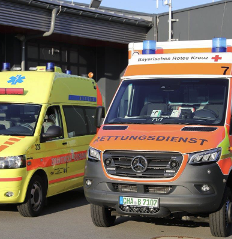Cross-Border Urgency: Why Immediate Coordination Saves Precious Hours in Medical Assistance
Cross-border urgency in medical assistance—why fast coordination saves lives by reducing delays and maximizing precious hours.

When a medical emergency strikes abroad, time is the most precious resource.
Whether it’s a heart attack, severe accident, or a need for organ transport, every minute counts.Cross-border urgency in medical assistance highlights the crucial importance of immediate coordination between healthcare providers, emergency services, and governments. Without swift collaboration, patients risk losing critical hours that could mean the difference between recovery and tragedy.
Understanding Cross-Border Medical Assistance
Definition and Scope of Medical Assistance Services
Cross-border medical assistance refers to specialized services that facilitate urgent medical care across international borders. This can include patient transportation, emergency response, access to foreign hospitals, and coordination of health insurance claims. These services are essential for travelers, expatriates, migrant workers, and even during global crises such as pandemics.
Typical Scenarios Requiring Cross-Border Medical Help
- A tourist suffers a stroke abroad and needs immediate evacuation to a better-equipped facility.
- A critically ill patient requires an organ transplant flown in from another country.
- Victims of natural disasters are transferred across borders for life-saving treatment.
These situations underline how urgent coordination can literally save lives.
Why Time is the Most Critical Factor
The “Golden Hour” in Emergency Medicine
Doctors often speak of the “golden hour”—the first 60 minutes after a traumatic event. Prompt medical intervention during this window significantly improves survival chances. In cross-border emergencies, delays caused by paperwork, language barriers, or unclear responsibilities can erode this golden hour.
How Delays Escalate Risks in Cross-Border Situations
- Oxygen deprivation in stroke patients worsens with every passing minute.
- Trauma victims risk organ failure if not stabilized quickly.
- Delays in air ambulance clearance can result in avoidable fatalities.
Immediate coordination helps minimize these risks by aligning resources on both sides of the border.
Challenges in Cross-Border Medical Coordination
Language and Communication Barriers
Miscommunication between healthcare professionals from different countries can cause treatment delays. Even small misunderstandings in dosage, diagnosis, or patient condition may prove fatal.
Legal and Administrative Hurdles
Different countries operate under varying healthcare regulations. Visa approvals, insurance validations, and medical liability laws often slow down urgent medical transfers.
Logistics and Transportation Complexities
Coordinating ambulances, helicopters, or air ambulances across borders requires advanced planning, landing permissions, and customs clearance—factors that consume precious time.
The Role of Technology in Saving Precious Hours
Real-Time Communication Platforms
Dedicated cross-border communication systems enable doctors and emergency teams to share patient details instantly. Encrypted apps and cloud platforms are already transforming how emergencies are handled.
AI-Powered Decision Support Systems
Artificial Intelligence can assess patient data rapidly, recommend nearest specialized hospitals, and optimize transportation routes, ensuring no time is wasted.
Digital Health Records Across Borders
Portable electronic health records that can be shared across borders eliminate duplication and confusion. Access to prior medical history allows for faster and more accurate treatment.
Best Practices for Immediate Coordination
Pre-Arranged Agreements Between Countries
Some nations have signed medical cooperation treaties allowing fast-track entry of medical personnel, ambulances, and supplies during emergencies.
Emergency Hotlines and Single Contact Points
A single hotline connecting multiple agencies reduces confusion, ensuring patients are routed to the right facility quickly.
Training Medical Teams for International Collaboration
Joint drills between neighboring countries help healthcare teams understand each other’s systems, bridging cultural and procedural gaps.
The Role of Governments and International Organizations
Policies That Encourage Faster Medical Collaboration
Governments can reduce red tape by harmonizing medical evacuation policies and pre-authorizing specific flight routes for emergencies.
Role of WHO and International Red Cross in Medical Assistance
Global organizations play a central role in setting protocols and facilitating collaboration during crises like pandemics, refugee health emergencies, or large-scale disasters.
How Families and Travelers Can Prepare
Importance of Travel Insurance and Medical Coverage
Travel insurance that covers cross-border medical evacuation ensures patients receive care without financial roadblocks. Lack of coverage often delays treatment.
Emergency Preparedness Tips for Cross-Border Travel
- Carry copies of medical records.
- Keep emergency contact numbers handy.
- Learn basic phrases in the local language related to health emergencies.
- Know the nearest consulate or embassy’s contact details.
Turning Coordination Into a Lifeline
Cross-border medical emergencies test the limits of human resilience and healthcare systems. Immediate coordination—between doctors, governments, and international organizations—can shave off precious hours that decide survival. With smarter technology, international agreements, and prepared travelers, cross-border urgency doesn’t have to mean chaos. Instead, it can transform into a lifeline of hope, efficiency, and life-saving action.
FAQs
Who typically manages cross-border medical assistance?
Specialized medical assistance providers, insurance companies, local hospitals, and sometimes government agencies coordinate these operations.
How does travel insurance support medical emergencies abroad?
It covers costs of evacuation, hospitalization, and sometimes even air ambulances, ensuring financial barriers don’t delay urgent care.
Are air ambulances commonly used for cross-border medical assistance?
Yes, they are essential for patients requiring immediate transfer to specialized facilities in another country.




